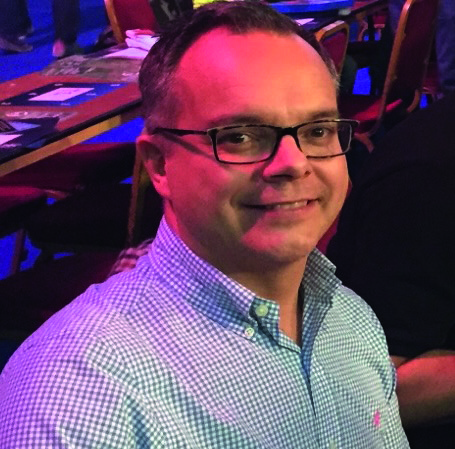Achieving sustainability in tall buildings with underfloor heating

Matthew Miller, National Specification Manager, Underfloor Climate Management (UFCM) discusses how to achieve embodied carbon reduction targets through materials, energy efficiency and product efficiency.
With the recent publication of CIBSE’s Embodied Carbon Calculator, there has never been a better time to focus on embodied carbon in building services – while also including long-term sustainability and cost-reduction for the end user.
As Part L changes also come into force, along with challenges around Net Zero emissions, it’s important to look at all measures that can help construction become sustainable and efficient – and which heating system is specified can make a significant difference to this.
When constructing tall buildings, carbon emissions and sustainability challenges tend to grow exponentially, and this is where specialist companies can offer the best advice to meet those challenges head on.
How to help achieve targets
One way of helping to achieve targets on sustainability and carbon reduction in tall buildings is by introducing underfloor heating. Effectively turning the whole floor into a radiant heat emitter means the design of the primary side`s flow can be reduced in temperature, thus reducing system losses and ultimately lower energy costs for the end user.
The consistent ambient temperature within a water-based underfloor heating solution offers efficient performance at reduced flow temperatures compared to traditional wall radiators
While radiator heating systems will typically have a water flow temperature of 75º to 85º and a return of 55º to 65º - an underfloor heating system may have a primary flow temperature of 45 º to 55 ºº - with a return of 35 º to 45º. The water heats to a lower temperature, which minimises wasted heat and improves the overall efficiency of the heating.
Key advantages
Another key advantage of an underfloor heating system is the precise control which can be exercised with the implementation of intelligent Smart controls. The latest generation of controls can seamlessly integrate with building systems including Fan Coil Units and Building Management Systems.
Underfloor heating is designed and controlled zonally and it lends itself to precise time and temperature control for each room, and so makes the whole heating system more efficient – reducing carbon emissions. The low return temperature also supports the efficient design of district heating networks.
Underfloor heating systems provide more than just energy-efficient, sustainable heating, they are the ultimate in design flexibility, enabling full-room access without radiators or storage heaters, helping create a smarter, cleaner and more contemporary space. It could be argued that underfloor heating is actually a space-making measure.
Acoustic cradle systems
Systems such as an acoustic cradle and batten are dry installed and provide all the functionality of a traditional system. It can be levelled on-site to eliminate variations in the structural floor surface and can accommodate building services. The InstaCoustic cradle provides a route to acoustic compliance to the values set out in Part E of the building regulations.
Using a cradle and batten system, as opposed to a screed system, will reduce the embodied carbon and reduce the structural load on the building significantly. Estimates indicate that the structural load could be nearly four times more with screed (22kg per m² vs 80kg).
Screed-based systems
A screed-based system negatively impacts the construction programme’s critical path - work inside the building has to pause for a significant period which can be exacerbated further if the weather conditions are unfavourable.
With a screed system this could involve separate suppliers for – screed, thermal insulation, acoustic insulation and underfloor heating components.
A dry acoustic system from a specialist supplier/manufacturer will also mean a reduction in the time, expense and emissions compared with sourcing multiple products from a wider supply chain.

Dry acoustic systems
The dry acoustic systems are also more efficient and sustainable – particularly when combined with heat pumps. Aligned with a direct acting heating system a dry underfloor system has a low thermal inertia and is more responsive to heat up and also to cool down. This may assist in mitigating the overheating issues that can be suffered in tall buildings.
It is estimated that the embedded carbon from a dry acoustic system is 25 times less than in a screed system. This is primarily due to the sustainable and responsible sourcing of materials.
Whichever system you choose it is advisable to speak to specialists to ensure that your system and product selection are suitable for the application and the demands of your building.
At UFCM we understand that accuracy of design is crucial to success so we use an optimised CAD program which is developed for heating and plumbing technology. This system enables detailed planning for any structure from the architect plan through to the materials list.
A recent example of developers taking full advantage of this service was when Lendlease chose Instacoustic to improve the functionality of the floor system - while enabling an engineered underfloor heating system to be installed as a single works package.
They decided to change the original specification for the apartment heating systems across the Potato Wharf development.
The final phase of the building, in Manchester’s Castlefield, was successfully completed in 2021 and includes 191 apartments across two blocks. The first two blocks, comprised of 102 one and two-bed apartments, in 2014.
We worked on providing an alternative to the original specified rigid board system, while providing the levelling functionality and uplift in acoustic performance with bespoke designed underfloor heating.
The change in specification provided a construction programme time saving.
An additional sustainability benefit of these components is the auto-balancing manifold manifolds which save time on commissioning and will ensure that heat outputs are always optimised.
Using, as an example; our patented valve technology, Stainless Steel Auto-Balancing Manifold constantly adjusts each circuit to the desired flow rate in the individual heating circuits directly which means hydraulic balancing is achieved in one simple operation.
The set flow rate is constantly adapted so, if the rate becomes too high due to closing adjacent circuits, the auto balancing manifolds control the flow automatically to the set value. This ensures that the underfloor heating system operates with optimum temperature distribution and maximum energy efficiency.
The unique recycled rubber crumb cradles in the system contributed towards a more sustainable build for Lendlease at Potato Wharf. The project required more than 80,000 acoustic cradles. Each individual cradle is made from recycled lorry tyres, is 100% acoustically resilient, recycled and re-useable at end of life. Potato Wharf saved 1,320 lorry tyres from going to landfill.
Several systems
There are several systems and products that can help buildings become more sustainable and energy efficient – and your heating specialist should be able to help with many of these.
Matthew Miller is National Specification Manager at Underfloor Climate Management (UFCM)







